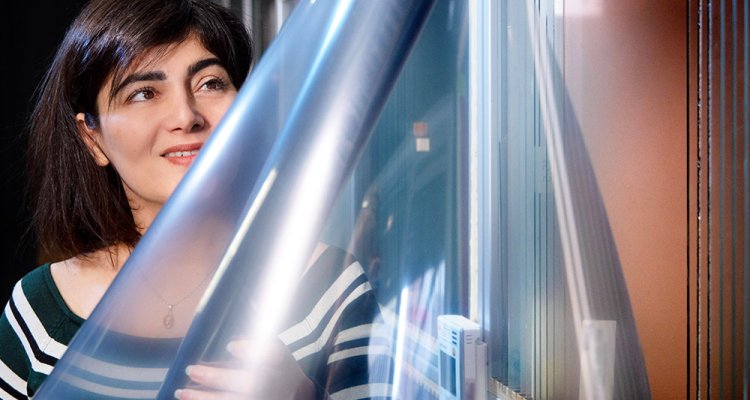
LightLab: unique measurement facilities for greenhouse cover and screen materials
The LightLab at Wageningen University & Research has unique equipment available for measuring the characteristics of greenhouse cover materials and screens, such as light transmission and energy saving. The lab is the leading global institute of its kind.
The LightLab is part of the Greenhouse Horticulture business unit. The measurements we perform are therefore primarily related to crop requirements and greenhouse climates. This includes glass, plastic films, plastic sheets, screens, nets or seasonal coatings. We can also measure semi-transparent materials for buildings, and photovoltaic (PV) applications.
We have a wide variety of measuring devices available. Some of them have been designed in-house and are therefore not available elsewhere, but we also use standardised equipment. Measurement activities are entirely objective and independent. The WUR LightLab is the only accredited lab for determining the optical characteristics of greenhouse cover materials and screens in accordance with NEN2675. Customers are provided with a measurement report with detailed relevant characteristics.
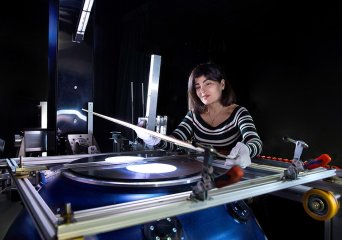
Measuring light transmissivity: transmission and reflection of dry and wet materials
When light strikes a transparent material, three things can happen. The light can be transmitted, it can be reflected, or it can be absorbed. Transmission, reflection and absorption together always account for 100% of the incoming light. WUR LightLab uses a variety of equipment to identify these characteristics in glass, films, plastic sheets, screens, nets and seasonal coatings.
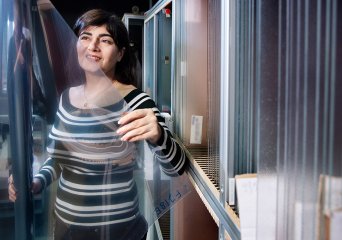
Measuring diffuse light: light diffusion and Hortiscatter
Scientific research has revealed that almost all horticultural crops benefit from diffuse light. Yields are higher, and the quality is better. That is the reason diffused glass and coatings are used in horticulture. It took some time for measuring techniques to adapt to recent developments, but these days we can consistently measure in accordance with NEN2675:2018 +C1.
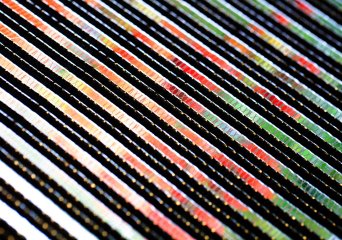
Measuring energy saving: thermal radiation, air permeability, moisture permeability
The energy saving capacity of a material is determined by the characteristics of the material itself, and by how it is used by a grower. The most important characteristics of materials are the transmissivity thermal infrared radiation and the emissivity.

Comments or suggestions
If you’re satisfied with the service provided by WUR Lightlab, or would like to suggest improvements, please fill in our survey.
Solar radiation
The sun provides a wide spectrum of radiation, ranging from ultraviolet (UV) to visible light to near infrared radiation (NIR). Visible light is broadly comparable to photosynthetic active radiation (PAR), which is used by plants for photosynthesis. We can measure all wavelengths, which is important because plants respond in different ways to different wavelengths. Solar radiation is also an important input for greenhouse’s energy management.
Light quantity and hemispherical transmission
The quantity of PAR light in a greenhouse is directly related to crop photosynthesis, growth and development. That is the reason why light transmission of greenhouse cover materials and screens is so important. In the past, it was common practice to measure how much light passed through the material in a perpendicular direction (perpendicular transmission). However, there is hardly any perpendicular light in greenhouses, because light inevitably penetrates the greenhouse cover or screen from different angles. Furthermore, perpendicular transmission rarely provides an accurate estimation of the light available to a crop in a greenhouse. This is true for almost all materials, including diffused glass and screens. That is the reason WUR LightLab measures light transmission from all angles of incidence, in accordance with NEN2675, and uses these measurements to calculate hemispherical transmission.
Light diffusion and Hortiscatter
Scientific research has revealed that many horticultural crops benefit from diffuse light. When diffuse light is compared to direct light and provided at equal light levels, it results in higher yields and improved quality. That is the reason diffused glass, screens and coatings are used in horticulture. It took some time for measuring techniques to adapt to recent developments, but these days we can consistently measure in accordance with NEN2675:2018 +C1. The Hortiscatter value indicates the extent to which incoming light is diffused by the material.

WUR LightLab measures how the incoming light is diffused under which angles and calculates the Hortiscatter from the measured values. The ideal level of light scatter (diffusion) is known as Lambertian diffuser. The Hortiscatter value indicates in percentage terms how closely this ideal level has been achieved.
Other measurements and calculations
Next to performing NEN2675 measurements, Wageningen University & Research LightLab continues to develop new measurement techniques and new measurement protocols based on international standards and research. We also use our measurement results and our horticultural expertise in simulation models for light levels and distribution in greenhouses (RAYPRO), greenhouse climate and crop growth (KASPRO & INTKAM) or adaptive greenhouse design.
Effect of condensation
The optical characteristics of materials are typically assessed in dry conditions. But a horticultural greenhouse is rarely dry. Moisture can condense on a material in different ways – for example in water drops (hydrophobic) or as a water film (hydrophilic) – and this in turn affects light penetration.
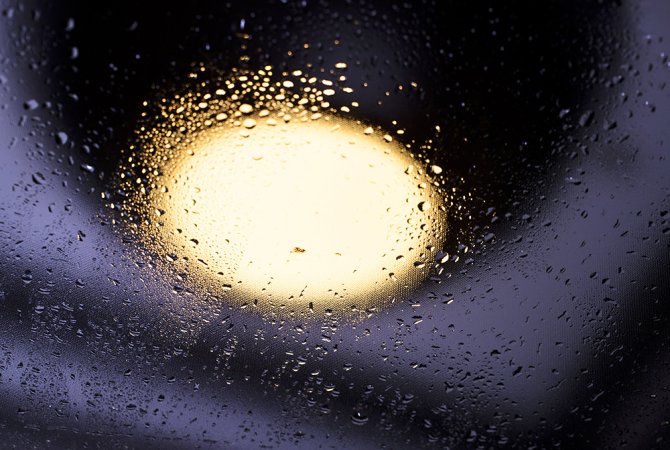
The Transvision Wet measures the effect of condensation on a material. The device measures the hemispherical reflection of the greenhouse cover material both under dry conditions and when condensation is present, for several consecutive hours. The material stands at an angle for this measurement, as it would in a greenhouse. High levels of moisture are generated, just like in a greenhouse containing a crop. The hemispherical reflection measured in both dry and wet conditions then enables us to express the change in hemispherical transmission as a percentage.
Energy saving
The energy saving capacity of a material is determined by the characteristics of the material itself, and by how it is used by a grower. The most important characteristics to consider in materials are the transmission of thermal infrared radiation (TIR) and emissivity. A range of equipment is available at WUR LightLab to measure these values. In addition, air permeability is an important factor for open materials such as screens and nets. WUR LightLab can measure air permeability at very low levels of air velocity, as it would be found in a greenhouse. Finally, moisture permeability is relevant for open materials. A new device is currently being developed for this measurement, in collaboration with several other companies.